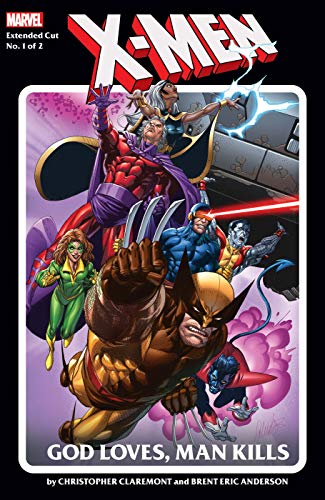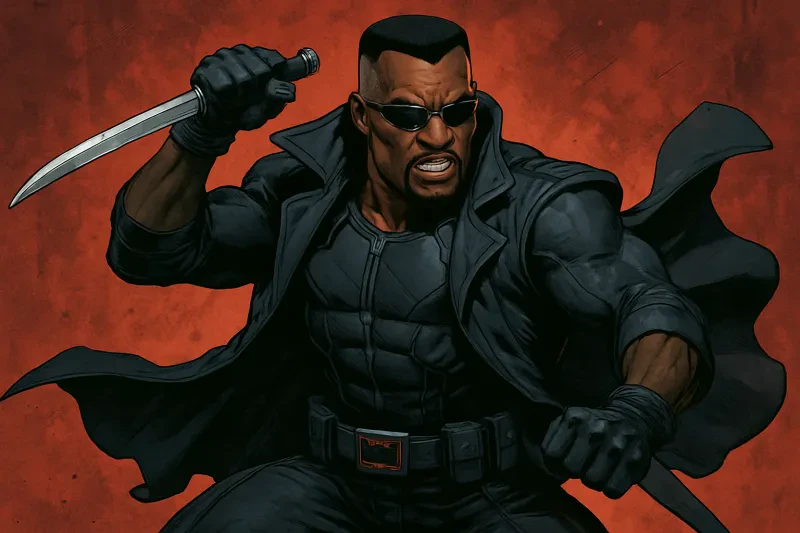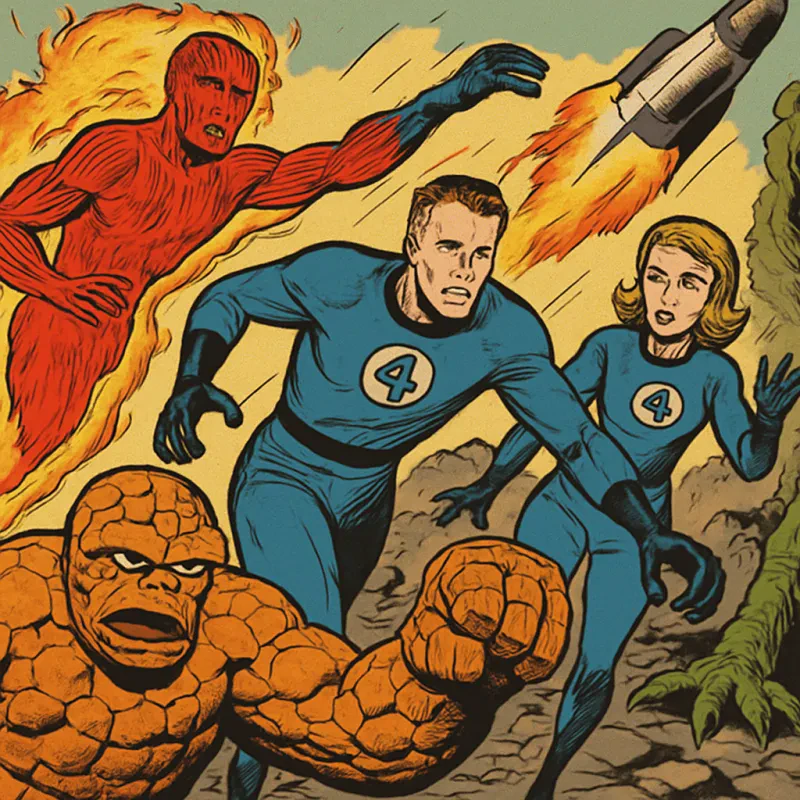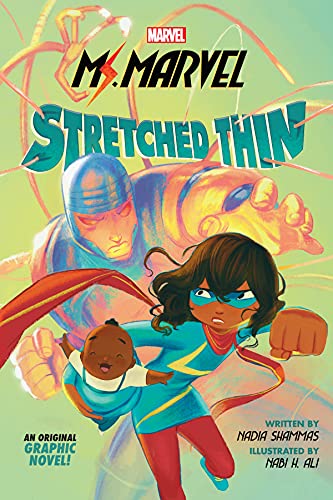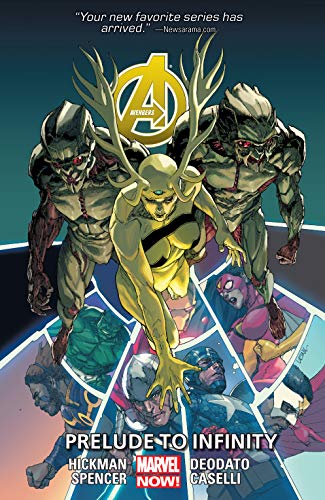Marvel's 'God Loves, Man Kills' is a graphic novel that was published in 1982 as part of the X-Men franchise. Written by Chris Claremont and illustrated by Brent Anderson, the graphic novel is considered one of the most significant and influential stories in the X-Men canon. It explores themes of prejudice, discrimination, and the struggle for acceptance, making it a powerful and thought-provoking addition to the X-Men universe.
The Historical and Social Context of the Graphic Novel
To fully understand the significance of 'God Loves, Man Kills,' it is important to consider the historical and social context in which it was published. The 1980s was a time of political and social upheaval, with issues such as racism, homophobia, and religious intolerance coming to the forefront of public consciousness. The graphic novel reflects these tensions and explores them through the lens of mutant discrimination.
During this time, there was a rise in conservative religious movements that often used their beliefs to justify discrimination against marginalized groups. This is evident in 'God Loves, Man Kills,' where Reverend William Stryker uses his religious beliefs to fuel his hatred towards mutants. The graphic novel serves as a commentary on the dangers of religious extremism and how it can be used to justify discrimination and violence.
X-Men God Love Man Kills #1 Extended Cut Cover A
Product information
R$186.46
Product Review Score
4.94 out of 5 stars
134 reviewsProduct links
The Themes of Prejudice and Discrimination
One of the central themes of 'God Loves, Man Kills' is prejudice and discrimination against mutants. Throughout the story, mutants are portrayed as outcasts who are feared and hated by society. They are seen as a threat to humanity and are subjected to violence and persecution.
The graphic novel explores the consequences of prejudice and discrimination through the experiences of the X-Men. The X-Men are a group of mutants who use their powers to protect humanity, yet they are still treated as dangerous outsiders. This theme is particularly relevant in today's society, where marginalized groups continue to face discrimination based on their race, gender, sexuality, or abilities.
The Role of Religion in the Graphic Novel
Religion plays a significant role in 'God Loves, Man Kills,' as it is used to justify discrimination against mutants. Reverend William Stryker, the main antagonist of the story, uses his religious beliefs to argue that mutants are abominations and should be eradicated. He sees himself as a holy warrior on a mission to cleanse the world of these "monsters."
The graphic novel raises important questions about the misuse of religion and how it can be used to justify hatred and violence. It challenges the notion that religious beliefs should be used as a weapon against those who are different. By portraying Stryker as a religious extremist, 'God Loves, Man Kills' highlights the dangers of religious intolerance and the need for acceptance and understanding.

The Characterization of the X-Men in 'God Loves, Man Kills'
In 'God Loves, Man Kills,' the X-Men are portrayed as heroes who fight against prejudice and discrimination. They are shown as individuals who use their powers for good and strive to protect both mutants and humans alike. However, despite their noble intentions, they are still seen as threats by society.
The characterization of the X-Men reflects the themes of the story. They are depicted as outsiders who are constantly battling against prejudice and trying to prove their worth. This resonates with readers who may have experienced similar feelings of being misunderstood or judged based on their differences.
The Villains in the Graphic Novel: William Stryker and His Followers
Reverend William Stryker serves as the main villain in 'God Loves, Man Kills.' He is a religious extremist who believes that mutants are an abomination and must be eradicated. Stryker's motivations stem from his fear and hatred of mutants, which he justifies through his religious beliefs.
Stryker's followers also play a significant role in the story. They are individuals who have been influenced by his extremist views and are willing to carry out acts of violence against mutants. Their blind devotion to Stryker highlights the dangers of following charismatic leaders without questioning their motives.
The Symbolism of the Cross and the X-Men's Struggle
Throughout 'God Loves, Man Kills,' the cross is used as a symbol of religious extremism and discrimination. Stryker often wears a cross around his neck, using it as a symbol of his righteousness and his mission to rid the world of mutants. This symbolism serves as a reminder of how religion can be twisted to justify hatred and violence.
The X-Men's struggle against discrimination is reflected in this symbolism. The X-Men themselves can be seen as symbols of those who are persecuted for their differences, much like Jesus was persecuted for his teachings. The use of the cross as a symbol in 'God Loves, Man Kills' adds depth and complexity to the story, highlighting the moral and ethical questions at its core.
The Use of Violence in 'God Loves, Man Kills'
Violence plays a significant role in 'God Loves, Man Kills,' as it is used to illustrate the consequences of prejudice and discrimination. Throughout the story, mutants are subjected to acts of violence and persecution simply because of their abilities. This violence serves as a stark reminder of the real-world consequences of discrimination.
However, 'God Loves, Man Kills' also explores the cyclical nature of violence. The X-Men are forced to confront their own feelings of anger and revenge, highlighting the dangers of perpetuating violence in the name of justice. This nuanced exploration of violence adds depth to the story and encourages readers to question their own beliefs and actions.
The Importance of Dialogue in the Graphic Novel
Dialogue plays a crucial role in conveying the themes and messages of 'God Loves, Man Kills.' Through conversations between characters, the graphic novel explores the complexities of prejudice and discrimination. It allows readers to see different perspectives and challenges them to question their own biases.
The dialogue in 'God Loves, Man Kills' also humanizes the characters, showing their vulnerabilities and fears. It adds depth to the story and allows readers to connect with the characters on a deeper level. By using dialogue to convey its themes, the graphic novel encourages empathy and understanding, making it a powerful tool for addressing issues of prejudice and discrimination.
The Impact of 'God Loves, Man Kills' on the X-Men Franchise
'God Loves, Man Kills' had a significant impact on the X-Men franchise, both in terms of storytelling and popularity. The graphic novel introduced complex themes and moral dilemmas that would become central to future X-Men stories. It challenged readers to question their own beliefs and prejudices, making it a standout addition to the X-Men canon.
The success of 'God Loves, Man Kills' also contributed to the popularity of the X-Men franchise. It showcased the potential of graphic novels as a medium for exploring complex social issues and resonated with readers who were looking for more depth and substance in their superhero stories. The graphic novel's impact can still be felt today, as it continues to inspire new generations of X-Men fans.
The Relevance of 'God Loves, Man Kills' Today
Despite being published almost four decades ago, 'God Loves, Man Kills' remains relevant today. Its exploration of prejudice, discrimination, and the struggle for acceptance is still highly relatable in a world where marginalized groups continue to face discrimination based on their differences.
The story can be used as a tool for addressing current issues of prejudice and discrimination. It encourages readers to question their own biases and challenges them to empathize with those who are different from them. By highlighting the dangers of religious extremism and the consequences of violence, 'God Loves, Man Kills' serves as a powerful reminder of the importance of acceptance and understanding in today's society.
